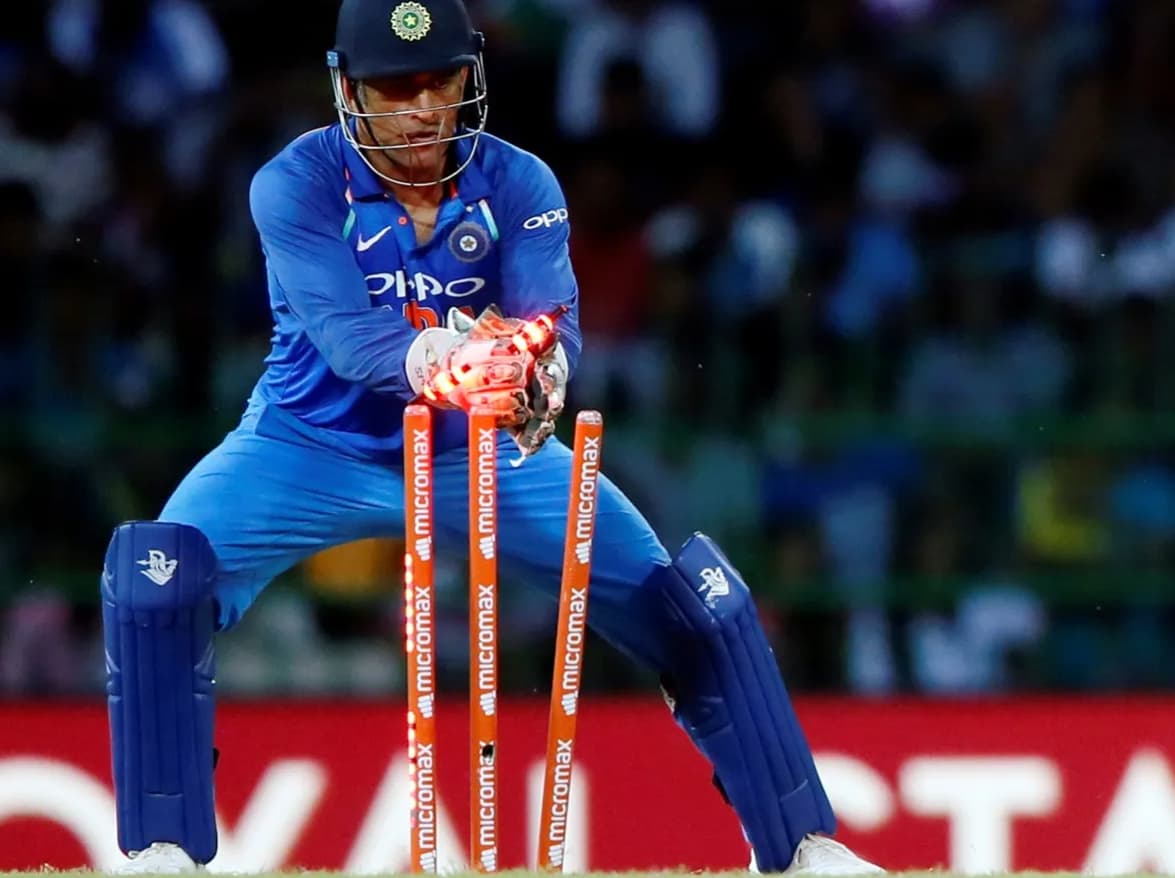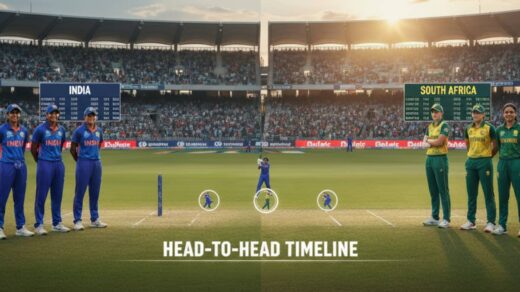In cricket, the wicketkeeper plays a role unlike any other player on the field.
While batters and bowlers often steal the spotlight, the best wicket keeper in the world works silently behind the stumps, ready to change the game in a split second with a lightning-fast stumping or a diving catch.
Wicketkeepers aren’t just there to catch the ball – they’re the backbone of the team’s defense.
They must stay alert for hours, watching every delivery with unwavering focus. A great keeper coordinates field placements, encourages bowlers, and spots weaknesses in opposing batsmen that others might miss.
What truly sets apart the best wicket keeper in the world from the rest is their consistency under pressure.
They must handle both fast bowlers sending balls at over 90 mph and tricky spinners who make the ball dance unpredictably. Add to this the need to contribute with the bat, and you understand why wicketkeeping is one of cricket’s most demanding roles.
Best Wicket Keeper In The World

In this article, we’ll explore the top 11 wicketkeepers who have mastered this challenging position throughout cricket history.
We’ll look beyond just statistics to understand what special qualities made each of them a legend of the game. Whether you’re new to cricket or a lifelong fan, you’ll gain a deeper appreciation for these remarkable athletes.
Top 11 Wicket Keepers In The World
Before diving into detailed profiles, here’s a comprehensive table showing the most successful wicketkeepers in international cricket history (updated for 2025):
| Rank | Wicketkeeper | Country | Matches | Catches | Stumpings | Total Dismissals |
|---|---|---|---|---|---|---|
| 1 | Mark Boucher | South Africa | 467 | 952 | 46 | 998 |
| 2 | Adam Gilchrist | Australia | 396 | 813 | 29 | 842 |
| 3 | MS Dhoni | India | 538 | 634 | 195 | 829 |
| 4 | Kumar Sangakkara | Sri Lanka | 594 | 609 | 139 | 748 |
| 5 | Ian Healy | Australia | 287 | 560 | 68 | 628 |
| 6 | Quinton de Kock | South Africa | 301 | 514 | 46 | 560 |
| 7 | Denesh Ramdin | West Indies | 284 | 429 | 54 | 483 |
| 8 | Rodney Marsh | Australia | 188 | 463 | 16 | 479 |
| 9 | Brad Haddin | Australia | 226 | 449 | 25 | 474 |
| 10 | Jeff Dujon | West Indies | 260 | 448 | 26 | 474 |
| 11 | Jos Buttler | England | 362 | 418 | 51 | 469 |
An Overview Of The Top 11 Wicket Keepers
What makes these wicketkeepers special goes far beyond numbers. Each brought something unique to the game – whether it was revolutionary batting, lightning-fast stumpings, or inspirational leadership. These players didn’t just excel at their position; they transformed how teams approach the wicketkeeping role.
From Boucher’s record-breaking consistency to Gilchrist’s game-changing batting and Dhoni’s tactical brilliance, each wicketkeeper on this list has left an indelible mark on cricket history. Let’s take a closer look at what made each of these players worthy of being called one of the best wicket keepers in the world.
Mark Boucher (South Africa)
Mark Boucher stands at the very top of wicketkeeping excellence with an incredible 998 dismissals in international cricket. The South African wicketkeeper was the definition of reliability behind the stumps, rarely making mistakes even in the most pressure-filled situations.
What made Boucher special was his perfect balance of technical skill and mental toughness. He wasn’t the most naturally gifted keeper, but his work ethic and determination were unmatched. Boucher worked tirelessly to perfect his craft, developing lightning-quick hands that fast bowlers like Allan Donald and Shaun Pollock trusted completely.
His career was tragically cut short in 2012 when a flying bail struck his eye during a warm-up match, forcing his immediate retirement. Had this accident not occurred, Boucher would likely have become the first wicketkeeper to reach the milestone of 1,000 international dismissals.
Beyond his keeping, Boucher was a valuable lower-order batsman who scored over 5,500 runs in Test cricket, including five centuries. His ability to rescue South Africa from difficult situations with gritty batting performances made him a complete team player.
Adam Gilchrist (Australia)
Adam Gilchrist didn’t just play cricket – he revolutionized it. Before “Gilly” arrived on the scene, wicketkeepers were primarily valued for their work behind the stumps, with batting considered a bonus. Gilchrist changed that perception forever by becoming one of the most devastating batsmen of his era while maintaining excellent keeping standards.
With 842 dismissals across formats, Gilchrist’s keeping was world-class, characterized by his athletic diving catches and sharp work against Australia’s formidable bowling attack. But it was his explosive batting that truly set him apart – opening in ODIs and batting at number 7 in Tests, he attacked bowlers with a fearlessness that transformed how cricket was played.
His strike rate of over 80 in Test cricket was revolutionary, and his ability to change games in a single session made Australia an even more dominant force. Gilchrist’s 57-ball century against England in the 2006-07 Ashes series remains one of cricket’s most stunning displays of power hitting.
Beyond his skills, Gilchrist was known for his sportsmanship. He famously walked off the field when he knew he was out, even in high-stakes situations like the 2003 World Cup semi-final, setting an example of integrity in a highly competitive sport.
MS Dhoni (India)
MS Dhoni, or “Captain Cool” as fans lovingly call him, redefined wicketkeeping with his unconventional but highly effective techniques. With 829 dismissals, including an astounding 195 stumpings – the most by any wicketkeeper in international cricket – Dhoni’s impact on the game has been immense.
Unlike traditional wicketkeepers who follow textbook techniques, Dhoni developed his own style. His lightning-fast stumpings often happened in a blink, with batsmen barely out of their crease before finding themselves walking back to the pavilion. His partnership with Indian spinners, particularly Ravichandran Ashwin and Ravindra Jadeja, created countless opportunities for dismissals.
What truly separated Dhoni from other wicketkeepers was his tactical brilliance. As India’s most successful captain, he brought a wicketkeeper’s perspective to leadership, understanding field placements and bowler rotations with uncanny precision. Under his captaincy, India won all three major ICC trophies: the T20 World Cup, the ODI World Cup, and the Champions Trophy.
With the bat, Dhoni was one of cricket’s greatest finishers, staying calm in the most pressure-filled situations. His iconic six to win the 2011 World Cup final for India will forever be etched in cricket history as one of the sport’s most memorable moments.
Kumar Sangakkara (Sri Lanka)
Kumar Sangakkara represents the perfect blend of elegance and efficiency in cricket. With 748 dismissals across all formats, the Sri Lankan legend combined textbook wicketkeeping technique with world-class batting to become one of the game’s most complete players.
Behind the stumps, Sangakkara was known for his smooth movements and perfect positioning. He made difficult catches look effortless, thanks to his excellent footwork and soft hands. His 139 stumpings showcase his quick reflexes, particularly against Sri Lanka’s spin wizards like Muttiah Muralitharan.
What makes Sangakkara’s wicketkeeping achievements even more impressive is that he gave up the gloves in Test cricket midway through his career to focus on batting. This decision paid dividends as he amassed over 12,000 Test runs at an exceptional average of 57.40 – one of the highest in cricket history.
Beyond his playing skills, Sangakkara is known for his articulate intellect and leadership. His 2011 MCC Spirit of Cricket Lecture at Lord’s is widely regarded as one of the most thoughtful speeches ever delivered in the sport, reflecting the depth of character that made him not just a great cricketer but a true ambassador for the game.
Ian Healy (Australia)
Ian Healy set the gold standard for wicketkeeping during Australia’s rise to cricket dominance in the 1990s. With 628 dismissals to his name, “Heals” was the perfect keeper for all conditions – whether standing up to spin legend Shane Warne or back to fearsome fast bowlers like Glenn McGrath.
What distinguished Healy was his technical excellence. Cricket experts often point to his footwork as the best in the business, allowing him to move quickly in any direction. His keeping stance was textbook, giving him the perfect base to react to late movements of the ball.
Healy’s partnership with Shane Warne produced countless dismissals, with his quick hands turning even the slightest edges into catches. His 68 stumpings demonstrate his exceptional ability to read spinners and capitalize on batsmen’s mistakes in a fraction of a second.
Though overshadowed by Gilchrist, who succeeded him, Healy’s contributions to Australian cricket were enormous. His reliable presence behind the stumps gave confidence to Australia’s bowlers and set the foundation for the team’s era of dominance.
Quinton de Kock (South Africa)
Quinton de Kock represents the modern wicketkeeper-batsman perfectly – aggressive with the bat, athletic behind the stumps, and still young enough to climb even higher on this list. With 560 dismissals already, the South African star combines natural talent with a fearless approach to the game.
Behind the stumps, de Kock is known for his sharp reflexes and ability to dive full-stretch to take catches that seem impossible. His keeping against pace is especially noteworthy, with many of his dismissals coming off South Africa’s fearsome fast bowling attack including Kagiso Rabada and Anrich Nortje.
As a batsman, de Kock’s explosive opening style has made him a cornerstone of South Africa’s limited-overs teams. His ability to score quickly from the start puts immediate pressure on opposition bowlers, often setting the tone for his team’s innings.
What makes de Kock’s achievements even more impressive is that he’s achieved them while also carrying the burden of captaincy at times. As he enters the prime of his career, cricket fans around the world are excited to see how high he can climb on the all-time wicketkeeping charts.
Top 3 Upcoming Wicket Keepers
While the legends above have set incredibly high standards, cricket is constantly evolving with new talent emerging. Here are three young wicketkeepers who show the potential to join the ranks of the all-time greats:
Rishabh Pant (India)
Rishabh Pant represents the fearless new generation of wicketkeeper-batsmen. Despite his young age, Pant has already made a significant impact on international cricket with his bold approach and match-winning performances.
What makes Pant special:
- Fearless batting that can change the course of a Test match in a single session
- Improving keeping skills, especially against spin on challenging Indian pitches
- Game-changing performances in Australia that helped India achieve historic series wins
- Remarkable resilience in bouncing back from setbacks, both on and off the field
Pant’s counterattacking batting in crucial situations has already earned him comparisons to Adam Gilchrist. If he continues to develop his wicketkeeping skills to match his batting prowess, he could become one of cricket’s most complete players in the coming years.
Alex Carey (Australia)
Alex Carey has emerged as Australia’s reliable wicketkeeper across formats, bringing a mature approach to the role. His journey to international cricket – after initially pursuing Australian Rules Football – showcases his determination and athletic versatility.
What makes Carey special:
- Clean glove work with minimal mistakes, following in the tradition of great Australian keepers
- Technically sound batting that adapts well to different match situations
- Strong leadership qualities that have seen him serve as vice-captain
- Excellent situational awareness both in his keeping and batting
Carey’s calm demeanor behind the stumps provides stability to Australia’s team, while his improving batting makes him an increasingly valuable player in all formats.
Phil Salt (England)
Phil Salt represents the modern multi-format specialist who can adapt his wicketkeeping and batting to the demands of different versions of cricket. His rapid rise through England’s ranks shows his ability to seize opportunities when they arise.
What makes Salt special:
- Explosive top-order batting that puts immediate pressure on opposition bowlers
- Sharp reflexes behind the stumps that lead to spectacular catches
- Versatility to perform in franchise cricket leagues around the world
- Constantly evolving skill set that embraces cricket’s newest innovations
Salt’s aggressive approach makes him perfectly suited to modern limited-overs cricket, while his improving keeping technique suggests he could develop into an all-format player for England.
FAQs About Wicketkeepers in Cricket
- Who holds the record for the most dismissals in international cricket by a wicket-keeper?
Mark Boucher holds the record with 998 total dismissals across all international formats. The South African legend might have reached 1,000 dismissals if not for the eye injury that forced his premature retirement in 2012.
- Which wicket-keeper has the most stumpings in ODI cricket?
MS Dhoni leads this category with 123 stumpings in ODI cricket. His unique technique of not always collecting the ball in front of the stumps allowed him to complete stumpings with incredible speed.
- Who was the first wicket-keeper to score a double century in Test cricket?
Imtiaz Ahmed from Pakistan was the first wicketkeeper to achieve this milestone, scoring 209 against New Zealand in 1955. This groundbreaking innings helped establish that wicketkeepers could also be major contributors with the bat.
- Which wicket-keeper has the highest batting average in Test cricket?
Andy Flower from Zimbabwe holds this distinction with a Test batting average of 53.70 while serving as wicketkeeper. This exceptional average shows that top wicketkeepers can match or even exceed specialist batsmen in run-scoring ability.
Also Check:
- Top 10 Dangerous Batsman of IPL History
- Top 10 Smallest Cricket Stadiums in India
- Top 10 Tallest Cricketers In The World
- Top 10 Most Beautiful Women Cricketers In The World
- Most Hardest Sports in The World
- Most Expensive Sports in the World
Conclusion: The Evolution of Wicketkeeping Excellence
The role of wicketkeeper has undergone a remarkable transformation over cricket’s history.
From Rodney Marsh’s pioneering techniques to Gilchrist’s revolutionary batting approach and Dhoni’s tactical innovations, each generation has redefined what it means to be an elite wicketkeeper.
What makes the best wicket keeper in the world isn’t just about statistics, though the numbers do tell an important story.
It’s about their ability to adapt to different conditions, their contribution to team success, and their capacity to innovate within their role.
Mark Boucher’s record of 998 dismissals may establish him statistically as the most successful wicketkeeper, but each player on this list brought something unique to the position:
- Gilchrist transformed expectations of what wicketkeepers could contribute with the bat
- Dhoni revolutionized leadership from behind the stumps
- Sangakkara showed unparalleled elegance in both keeping and batting
- Modern players like Buttler and de Kock continue to push boundaries with their athletic keeping and innovative batting
As cricket evolves, wicketkeeping continues to develop with it. The emerging talents highlighted in this article represent the next wave of innovation, combining traditional skills with modern approaches suited to cricket’s changing demands.
What remains constant is the central importance of the wicketkeeper to a team’s success. They remain cricket’s ultimate multi-taskers – part athlete, part strategist, part motivator – working tirelessly behind the scenes while the spotlight often shines elsewhere.
The best wicket keeper in the world isn’t just a position player – they’re the heartbeat of a cricket team’s defensive efforts and increasingly vital contributors with the bat.
As we watch young talents like Pant, Carey, and Salt develop, one thing is certain: great wicketkeepers will continue to shape cricket in ways both visible and invisible, leaving their mark on the game through their skill, innovation, and dedication to this uniquely challenging role.



